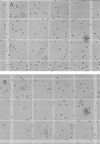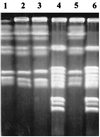Candida glabrata: review of epidemiology, pathogenesis, and clinical disease with comparison to C. albicans
- PMID: 9880475
- PMCID: PMC88907
- DOI: 10.1128/CMR.12.1.80
Candida glabrata: review of epidemiology, pathogenesis, and clinical disease with comparison to C. albicans
Abstract
Until recently, Candida glabrata was considered a relatively nonpathogenic commensal fungal organism of human mucosal tissues. However, with the increased use of immunosuppressive agents, mucosal and systemic infections caused by C. glabrata have increased significantly, especially in the human immunodeficiency virus-infected population. A major obstacle in C. glabrata infections is their innate resistance to azole antimycotic therapy, which is very effective in treating infections caused by other Candida species. Candida glabrata, formerly known as Torulopsis glabrata, contrasts with other Candida species in its nondimorphic blastoconidial morphology and haploid genome. C. glabrata currently ranks second or third as the causative agent of superficial (oral, esophageal, vaginal, or urinary) or systemic candidal infections, which are often nosocomial. Currently, however, there are few recognized virulence factors of C. glabrata and little is known about the host defense mechanisms that protect against infection. Two established animal models (systemic and vaginal) have been established to study treatment, pathogenesis, and immunity. Treatment of C. glabrata infections can include azoles but often requires amphotericin B or flucytosine. This review summarizes all known clinical and experimental information about C. glabrata infections with comparisons to C. albicans as a means of contrasting the two species commonly observed and emphasizing the many recognized differences.
Figures





References
-
- Abi-Said D E, Uzon O, Raad I, Pinzcowski H, Vartivarian O. The epidemiology of hematogenous candidiasis caused by different Candida species. Clin Infect Dis. 1997;24:1122–1128. - PubMed
-
- Anaissie E J, Darouiche R O, Abi-Said D, Uzum O, Mera J, Gentry L O, Williams T, Kontoyiannis D P, Karl C L, Bodey G P. Management of invasive candidial infections: result of a prospective, randomized, multicenter study of fluconazole versus amphotericin B and review of the literature. Clin Infect Dis. 1996;23:964–972. - PubMed
-
- Banerjee S N, Emori T G, Culver D H, Gaynes R P, Jarvis W R, Horan T. Secular trends in nosocomial primary blood stream infections in the United States. Am J Med. 1991;91:86S–89S. - PubMed
-
- Barret-Bee K, Hayes Y, Wilson R G, Ryley J F. A comparison of phospholipase activity, cellular adherence and pathogenicity of yeasts. J Gen Microbiol. 1985;131:1217–1221. - PubMed
Publication types
MeSH terms
LinkOut - more resources
Full Text Sources
Other Literature Sources
Medical

